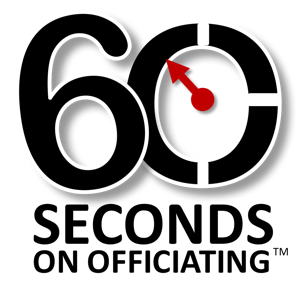
To Designate is My Point
Here’s a couple of quick reminders when it comes to a “designated spot throw-in.”
- As the ruling official, you should always communicate with your crew where the ensuing throw-in will take place by pointing to the out-of-bounds spot.
- On a violation or foul where the ruling official will also administer the throw-in — you still incorporate the point as part of your “spot mechanics.”
- The (throw-in) administering official establishes the actual spot (on the floor) that will be considered THE designated spot. This is done by pointing (with index finger) to this spot on the floor.
- Once established this spot has certain limitations:
- It’s 3 feet wide.
- It has no limit on depth. The spot can go back as far as a player can move without running into obstacles.
- The forward-edge ends at the boundary plane.
- The thrower must keep at least ONE FOOT over this 3 feet wide designated spot.
- The thrower can move (with or without dribbling). The traveling rule and pivot-foot restrictions are NOT in effect.
- If the nearest spot to the violation (or foul) would make the ball become inbounded underneath the basket, it must be brought to one side or the other, to the lane line extended.
As the administering official here’s a couple things you “may verbalize” and others you should not.
YES: This is a designated spot. (as you point to the floor)
NO: Do not run.
YES: That is your spot (as you point to the floor)
NO: Stand still.
NO: Don’t move.
Be careful what you say when administering as players can move during ALL throw-ins.
If the player retains the ability to “run the endline” you may verbalize this by saying — “you can run the endline” and use the appropriate signal. This would be an instance when a designated spot (and point) is NOT used.
The key to remember is — the official(s) determine the designated spot but players MAY move within the scope of the rules and are not required to stand still.
NFHS Rule References
4-42-6, 7-5-5
